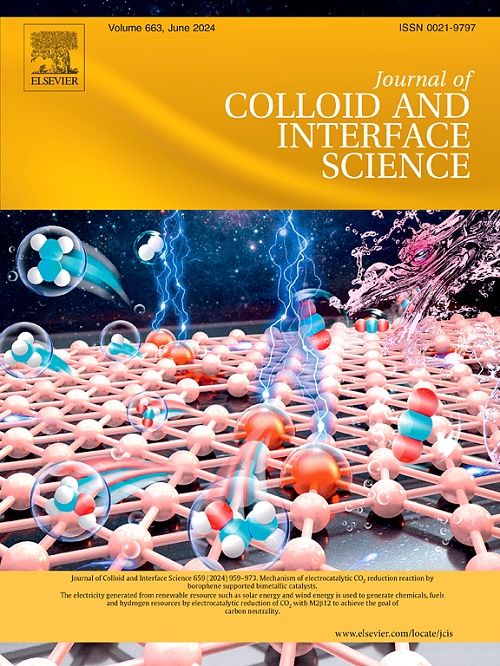Unraveling the anti-poisoning mechanism of highly dispersed Ni atoms enhanced porous MnOx catalysts in the selective reduction of NOx by NH3
IF 9.4
1区 化学
Q1 CHEMISTRY, PHYSICAL
引用次数: 0
Abstract
Rationally designing catalysts suitable for flue gas purification at low temperatures and unraveling the anti-poisoning mechanism at the atomic level remain challenges. Here, a highly dispersed Ni-doped MnOx catalyst (Ni0.1Mn0.9Ox) was constructed and applied for selective catalytic reduction (SCR) of nitrogen oxides (NOx). The long-term stability of Ni0.1Mn0.9Ox is up to 80% (180 °C) after 18 h under SO2 and H2O conditions. This is due to the fact that the highly dispersed Ni atoms enhance the redox and surface acidity of MnOx, and modulate the electronic structure of the active Mn sites. The denitrification reaction on Ni0.1Mn0.9Ox mainly follows the Eley-Rideal mechanism. The anti-poisoning mechanism is that the introduction of Ni weakens the electron transfer between the Mn site and SO2, thereby inhibiting the adsorption of SO2. In particular, the H2O adsorbed on the Ni sites is decomposed to replenish the depleted Brønsted acid sites, which facilitates the adsorption of NH3. However, an excess of H2O can have an inhibitory effect. In addition, the mesoporous structure may increase the mass transfer rate and reduce the accumulation of harmful substances. This study provides viable insights for the design of SCR catalysts with excellent anti-poisoning ability.

揭示了高分散Ni原子增强多孔MnOx催化剂在NH3选择性还原NOx中的抗中毒机制
合理设计适用于低温烟气净化的催化剂,并在原子水平上揭示其防中毒机理仍然是一个挑战。本文构建了一种高度分散的ni掺杂MnOx催化剂(Ni0.1Mn0.9Ox),并将其应用于氮氧化物(NOx)的选择性催化还原(SCR)。在SO2和H2O条件下,Ni0.1Mn0.9Ox的长期稳定性(180℃)可达80%。这是由于高度分散的Ni原子增强了MnOx的氧化还原和表面酸性,并调节了活性Mn位点的电子结构。Ni0.1Mn0.9Ox上的反硝化反应主要遵循Eley-Rideal机制。其抗中毒机理是Ni的引入削弱了Mn位点与SO2之间的电子转移,从而抑制了SO2的吸附。特别是,吸附在Ni位点上的H2O被分解,补充了耗尽的Brønsted酸位点,有利于NH3的吸附。然而,过量的水会有抑制作用。此外,介孔结构可以提高传质速率,减少有害物质的积累。本研究为设计具有优良抗中毒能力的SCR催化剂提供了可行的思路。
本文章由计算机程序翻译,如有差异,请以英文原文为准。
求助全文
约1分钟内获得全文
求助全文
来源期刊
CiteScore
16.10
自引率
7.10%
发文量
2568
审稿时长
2 months
期刊介绍:
The Journal of Colloid and Interface Science publishes original research findings on the fundamental principles of colloid and interface science, as well as innovative applications in various fields. The criteria for publication include impact, quality, novelty, and originality.
Emphasis:
The journal emphasizes fundamental scientific innovation within the following categories:
A.Colloidal Materials and Nanomaterials
B.Soft Colloidal and Self-Assembly Systems
C.Adsorption, Catalysis, and Electrochemistry
D.Interfacial Processes, Capillarity, and Wetting
E.Biomaterials and Nanomedicine
F.Energy Conversion and Storage, and Environmental Technologies

 求助内容:
求助内容: 应助结果提醒方式:
应助结果提醒方式:


